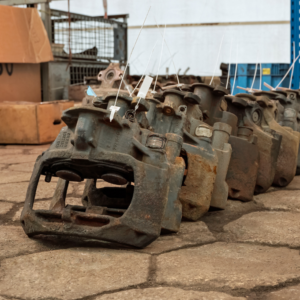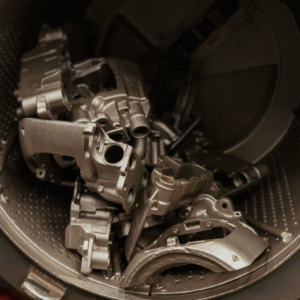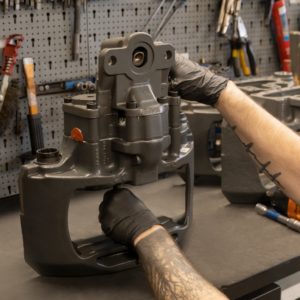Knowledge
Expert support
Process of brake caliper remanufacturing
Brakes are a key component of any car for safety of driving. It is important to remember that calipers may need to be remanufactured after a certain period of use. Here is what this process looks like step by step.
 First, it is necessary to deliver the used brake calipers (cores) to the warehouse where disassembly takes place. The next stage is an initial quality check of the product – for mechanical damage, excessive corrosion, etc.
First, it is necessary to deliver the used brake calipers (cores) to the warehouse where disassembly takes place. The next stage is an initial quality check of the product – for mechanical damage, excessive corrosion, etc.
The brake caliper cores must then be physically dismantled and the removed caliper taken apart. Only then does the mechanic verify, during quality control, which parts are suitable for remanufacturing and which need to be disposed of.
All parts that can be remanufactured must be washed thoroughly and only then a further quality check is being carried out.
The next stage is shot blasting. This is similar to sandblasting, except that the sandblasting process requires a person to physically carry out the work – with shot blasting, a machine does all the work for us. Once the parts have been checked again, this time for any damage, the brake caliper cores are coated. The process takes place in a powder form. The heat curing process in a heat chamber is intended to harden the paint coat. Only after the core has been painted and checked again, it can be sent to the next stage, which is assembly.
Putting the remanufactured caliper together
Before starting the assembly process, the caliper core and all the components needed to assemble the caliper must be prepared. The guide sleeves, along which the caliper moves in the car, must then be pressed into place. Further assembly is carried out using suitable lubricants that allow the component to work in both harsh and high temperatures.
The next stage is to check that the brake lever operates correctly and that the pistons are pressing evenly. Then they need to be aligned properly to this lever. Almost at the very end, a warranty number must be assigned and affixed to the caliper. The number makes identification much easier in the event of a claim.
 Caliper operation control
Caliper operation control
This is followed by the adjustment of the pistons for the final function check of the caliper once it has been assembled. The final stage of the whole process is to check the quality of the assembly and its correct operation. Every fifth brake calliper, once fully assembled and checked, is tested on a special test bench. An actuator is fitted to the caliper to simulate a braking cycle – a minimum of 500 strokes.

SBP products are available in many European countries. Select the location, to be redirected to the website of an exclusive distributor:
